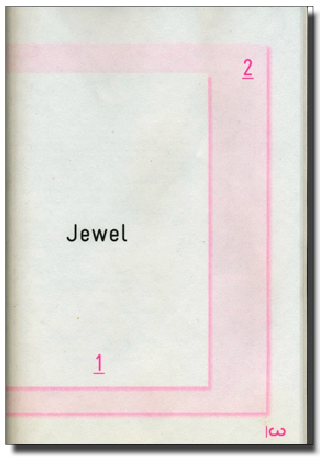XX- is based on a research-approach that focuses on the intensive examination of typography and writing in all its social, societal and aesthetic ways of application. In the 2006 ‘typography class’ at the Leipzig Academy of Visual Arts, we (Elisabeth Hinrichs, Aileen Ittner and Daniel Rother) developed our project on the visual implementation of “symbols of power” in writing systems under the conditions of a totalitarian regime. In particular, we examined the way in which the SS (Nazi SS 1925-45) presented and visually legitimated itself by means of a constructed sign ![]() . A collection of sources was created on the basis of intensive research in libraries, state archives and the Internet as well as of interviews with contemporary witnesses. This collection was the starting point and the foundation of that book XX-, The SS-Rune as a special Character on Typewriters.
. A collection of sources was created on the basis of intensive research in libraries, state archives and the Internet as well as of interviews with contemporary witnesses. This collection was the starting point and the foundation of that book XX-, The SS-Rune as a special Character on Typewriters.
In its three chapters FEMALE (FRAU), SIGN (ZEICHEN), MACHINE (MASCHINE) the book XX– examines the way in which administration, communication and technology were an elementary condition of the functioning of the annihilation apparatus in the Third Reich.
The book’s content consists in visual (advertising and propaganda images, files) and textual fragments (contemporary, philosophical, sociological statements as well as statements related to cultural studies and encyclopedic entries).In it, history is interpreted, displayed and arranged. In this sophisticated way of dealing with history which makes its documents visible and discloses them for use the book XX- questions its sources and their perception. In its hybrid composition as a file as well as a book its design employs filing techniques such as a registry, catchwords, numeration and categorisation and embeds these into a book format.
The book XX- is composed as a symbiosis of a file and a book cover and thus refers to its sources: The archive and literature. Constructed solely of visual and textual fragments, it uses available literature (contemporary statements, encyclopedic entries, philosophical, sociological, political and linguistical standpoints as well as statements related to cultural studies) and images (advertising- and propaganda images of the 30s and 40s, files).
In the book, fragments are juxtaposed without them being commented in way resembling an archive. Thus, they demand an independent analysis and an autonomous evaluation of the different opinions by the reader. The selective constellation of the sources takes on the book’s structures: Their succession and compilation are fixedand thus generate a new content. The resulting hybrid presents history and questions its alleged absoluteness and unambiguousness at the same time.
The book XX- questions its sources and their perception In a sophisticated way of dealing with history that makes its documents visible and discloses them for use. Thus the closeness of the book as a medium is abrogated in favour of a new perception of historiography. History is interpreted, displayed and arranged in a reflection of the medium.
by Elisabeth Hinrichs, Aileen Ittner, Daniel Rother
Title: XX- (The SS-Rune as a special Character on Typewriters)
Series: orange files. Studies on Grammatology # 1 [orange files. Studien zur Grammatologie]
Editors: Julia Blume, Prof. Günter Karl Bose, Institute for Book Design at the Leipzig Academy of Visual Arts [Institut für Buchkunst der Hochschule für Grafik und Buchkunst Leipzig] Leipzig 2009
324 pages, 198 images, 420 citations, hard cover, cost €49
ISBN: 978-3-932865-55-8




